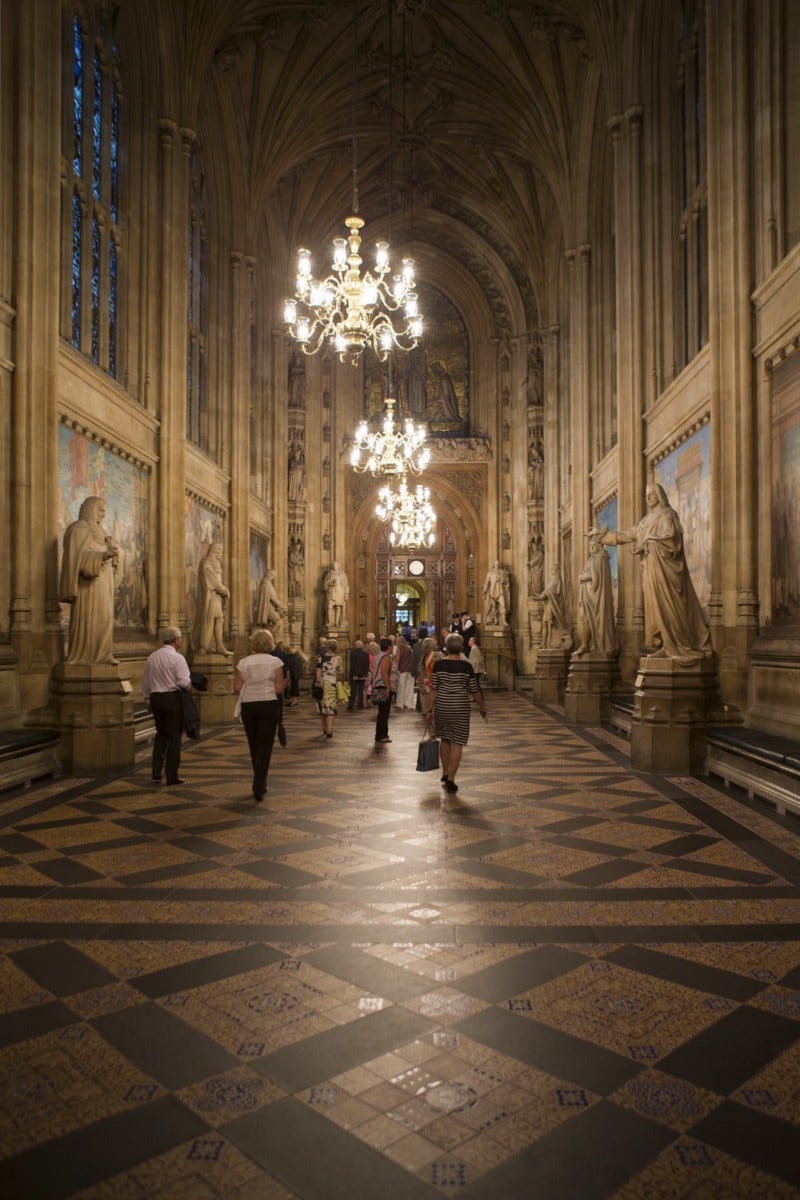In April, May Looks To June — Here’s What To Expect.
Britain, it turns out, will have a general election this year. It will make 2017 the fourth consecutive year in which the country — or at…
Britain, it turns out, will have a general election this year. It will make 2017 the fourth consecutive year in which the country — or at least a part of it — has faced a monumental choice at the ballot box.
But this time round, the uncertainty which characterised the 2014 Scottish independence referendum, the 2015 general election, and the 2016 referendum on the EU seems to be lacking. Theresa May will continue to be the country’s prime minister, and will score five more years in charge with all the nonchalance of renewing a railcard.
And yet, for all the recent polls showing May with a seemingly unassailable lead of 20 points or more over Jeremy Corbyn’s hapless Labour party, seven weeks is a long time in politics – particularly the chaotic politics of the moment. And misplaced predictions ahead of several of the last major elections suggest caution this time round.
Following the 2015 general election, when David Cameron secured an overall majority of 16 seats, that slim advantage in the Commons remains the same — despite a couple of seat changes as a result of by-elections. A 16-seat Tory majority, then, is the benchmark for thinking about what happens next.
With that in mind, here are a few possibilities for what June 8th will bring.
Scenario 1: One Nation of Conservatives
Of the 11 by-elections since 2015, only two have seen seats traded between parties. One of them augurs very poorly for Corbyn’s Labour. In the Cumbrian seat of Copeland, Tory Trudy Harrison overcame a Labour majority of 2564 votes in 2015 to score a convincing win, securing her own 2147-vote cushion. All things being equal, what would that 13% swing from Labour to the Conservatives look like nationwide? This:
Though the swing may not seem all that big, this would result in a majority north of 100 for the Tories, with Corbyn’s Labour dropping to its lowest seat total since 1935. As a consequence Brexit — of the hard variety sought by Theresa May — would be well and truly on.
Scenario 2: Brexit backlash
It might be fair to assume, though, that the 48% of Britons who voted to remain in the EU will find a way to push back on May’s hard-Brexit agenda, especially in defence of Britain’s membership of the single market. A chief beneficiary of this backlash is likely to be the Lib Dems. Licking their wounds after a staggering loss of seats in the 2015 general election, which saw their parliamentary party shrink to eight — enough to fit in both a cab and a tweet — the Lib Dems swung back with victory in the Richmond Park by-election, called by Zac Goldsmith after the government announced plans to press ahead with a third runway at Heathrow.
What would a surge in opposition to Brexit look like? Simplifying somewhat, let’s give every 2015 Conservative constituency won from the Lib Dems, which voted by any margin to Remain in 2016, back to the Lib Dems, rewarding their status as the only equivocally anti-Brexit national party. This gives the Lib Dems a fairly meagre net add of six seats.
What about other Conservative seats — particularly in the South East — where the population voted to Remain? This is tougher to extrapolate: in constituencies the Lib Dems did not hold prior to 2015, we can’t as easily make the case that they’ll flip straight back. But there may be some exceptions, particularly in constituencies in which the Conservative MP voted to Leave, even as their constituencies voted to Remain. There are thirty of these constituencies, with the most pronounced disparity occurring in Kensington, which voted to remain by a whopping 68% despite its MP, Victoria Borwick, voting Leave.
Few of these MPs, though, will be quaking in their boots, since most of them sit on sizeable majorities. But for the sake of argument, let’s assume a Brexit backlash sizeable enough that any Conservative MP representing a constituency which voted to remain at least 55%-45%, and who has a majority of less than 12%, falls to the second party (whether or not the MP themselves voted to Leave). In addition to the seats they already shed to the Lib Dems, the Tories lose seven seats to Labour as well as their only Scottish seat — Dumfriesshire, Clydesdale and Tweeddale — to the SNP.
Applying this rubric to the 2015 seats gives us this outcome:
This would represent an enormous shock. The effects of Brexit would have bitten Theresa May harder than anyone expected, as voters in long-held Tory seats in the affluent south-east hold their nose and vote for Jeremy Corbyn as a last ditch show of disdain for May’s Brexit kamikaze. The Tories would lose overall control of the Commons even while remaining the largest party, and May would be forced into serious concessions over Europe for the Lib Dems to even countenance once again propping up a Tory government. The SNP’s takeover of Scottish politics, meanwhile, would be almost totally complete.
Scenario 3: A new opposition?
Such was the Lib Dems’ drubbing in 2015 that it will likely take several cycles for them to win back all the seats they held as junior coalition partners from 2010–2015. But if the scenarios outlined above are combined — a woefully unpopular Jeremy Corbyn and a vengeful, motivated Remain vote — it may be that the Lib Dems make gains greater than suggested above.
Let’s start by giving Lib Dems the six seats they lost to Tories in 2015 which went on to vote Remain by any margin in 2016. Then, assuming Corbyn’s unpopularity hampers Labour’s chances like it did in Copeland, let’s reapportion every Labour seat with a Copeland-or-smaller majority. As in Scenario 1, most of these seats go to the Tories, with a few exceptions. In Labour constituencies where (1) the Remain vote was greater than 55%, (2) where the Labour majority is less than in Copeland, and (3) where the Lib Dems got at least 60% as many votes as the Tories, we’ll give these to the Lib Dems instead. This gives the Lib Dems four more seats — Cambridge, Bermondsey, Cardiff Central, and Bristol West — for an overall net gain of ten.
In this scenario, the Tories still dominate, and Labour’s position is worsened still at the expense of post-Brexit punishment from angry Remainers. Yet Labour’s rump of traditional seats still keep them firmly as the official party of opposition.
I’ve made several assumptions in the above scenarios, and they typically represent the outer bounds of what we might expect to happen. (Though I wouldn’t bet against Labour’s seat count going still lower.) But what’s as important to note, in contrast to past elections, is how stable May’s position is (and thus why she felt so confident calling the election). Only a substantial, concerted backlash against Brexit could threaten May’s overall majority — something which would mark a serious realignment in British politics, with affluent areas of the south-east revolting against a hard Brexit.
There’s still seven weeks to go — but just as this was Theresa May’s election to call, it’s hers to lose.








